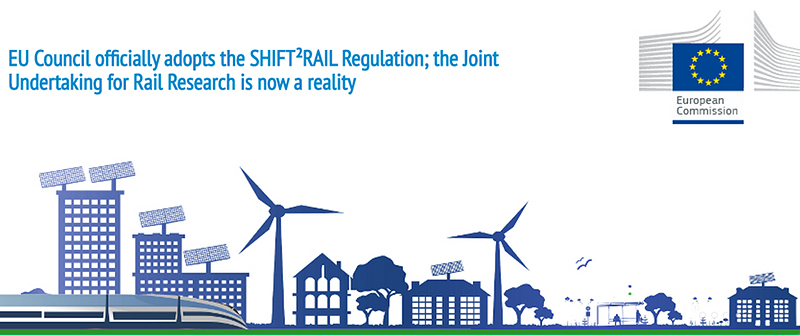IRR part of €18million Shift2Rail initiative named In2Rail

Tue, 02 Jun 2015 15:35:00 BST
The Institute of Railway Research has been awarded two key roles - investigating novel switches and crossings and looking at possibilities for new kinds of track system
Information on all components of the Shift2Rail initiative can be seen in this video...
RESEARCHERS at the University of Huddersfield will help develop radical new technologies such as “self-correcting”, maintenance-free tracks when they take part in a major project designed to ensure that railways are fit for the future.
The EU has given the go ahead to an ambitious, six-year initiative named Shift2Rail, co-financed by the private sector. Its three main targets are to boost the capacity of Europe's railway network to cope with soaring demand; increase the reliability and quality of rail services; and make big reductions in costs.
As a vital preliminary, the EU has announced three railway research programmes - dubbed “lighthouse projects” – that will feed into Shift2Rail. They are named Roll2Rail, which will cover rolling stock; IT2Rail, which deals with information technology; and In2Rail, which investigates track and infrastructure and will be led by the UK’s Network Rail and Swedish railway administrator Trafikverket.
 The University of Huddersfield’s Institute for Railway Research is one of 55 partners taking part in the €18 million In2Rail programme, and has been awarded key roles in two of its work packages - one that investigates novel switches and crossings and another that looks at possibilities for new kinds of track system.
The University of Huddersfield’s Institute for Railway Research is one of 55 partners taking part in the €18 million In2Rail programme, and has been awarded key roles in two of its work packages - one that investigates novel switches and crossings and another that looks at possibilities for new kinds of track system.
The IRR’s Head of Research, Dr Yann Bezin, said that the team would effectively be starting with a blank sheet of paper, as if railways were a completely new concept, without their long history.
“We will trying to do something radically different and eliminate as much as possible the failure modes that are associated with the existing system,” said Dr Bezin.
For example, the IRR had been in talks with a number of partners over new rail principles that completely avoided switch rails as they are commonly used, which are exceptionally prone to damage.
 Also under investigation will be the potential for smart tracks embedded with sensor technology and mechatronics that enable them to monitor for damage and self-adjust over time to compensate for normal wear and tear. This would remove maintenance staff from the tracks, reduce disruption and fully enable 24-hour freight operation.
Also under investigation will be the potential for smart tracks embedded with sensor technology and mechatronics that enable them to monitor for damage and self-adjust over time to compensate for normal wear and tear. This would remove maintenance staff from the tracks, reduce disruption and fully enable 24-hour freight operation.
“It is difficult, but it is achievable with smart systems and smart structures. And if you do have to suspend services, you only do it when it is absolutely necessary, plan it in advance and get in and out quickly,” said the Director of the IRR, Professor Simon Iwnicki.
Among the research institutions working closely with the University of Huddersfield’s IRR on Shift2Rail is Loughborough University, which has special expertise in control systems. The IRR’s capacity for computer modelling will enable it to use simulation techniques in order to test the efficacy of some of the radically new systems being proposed.







